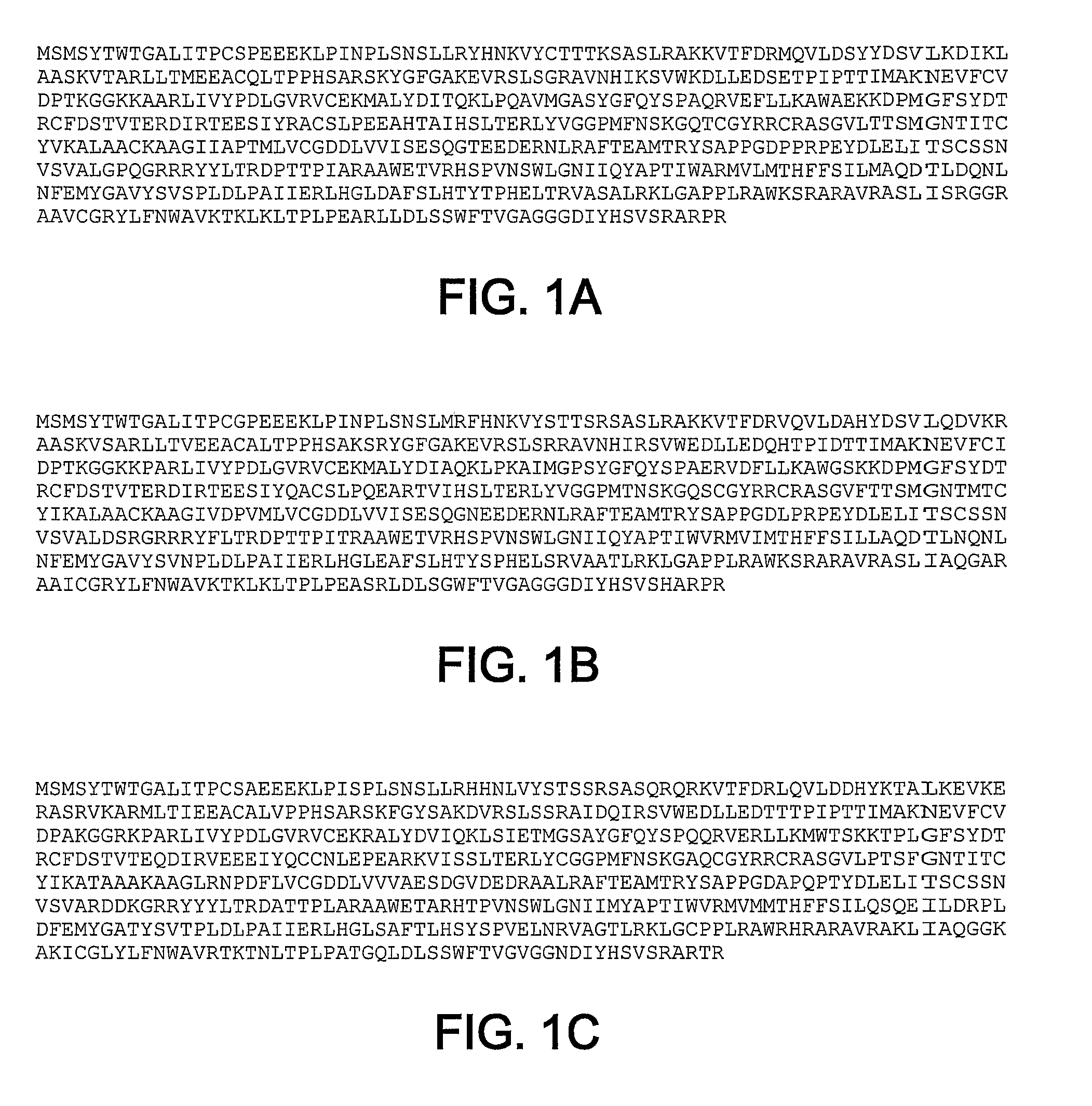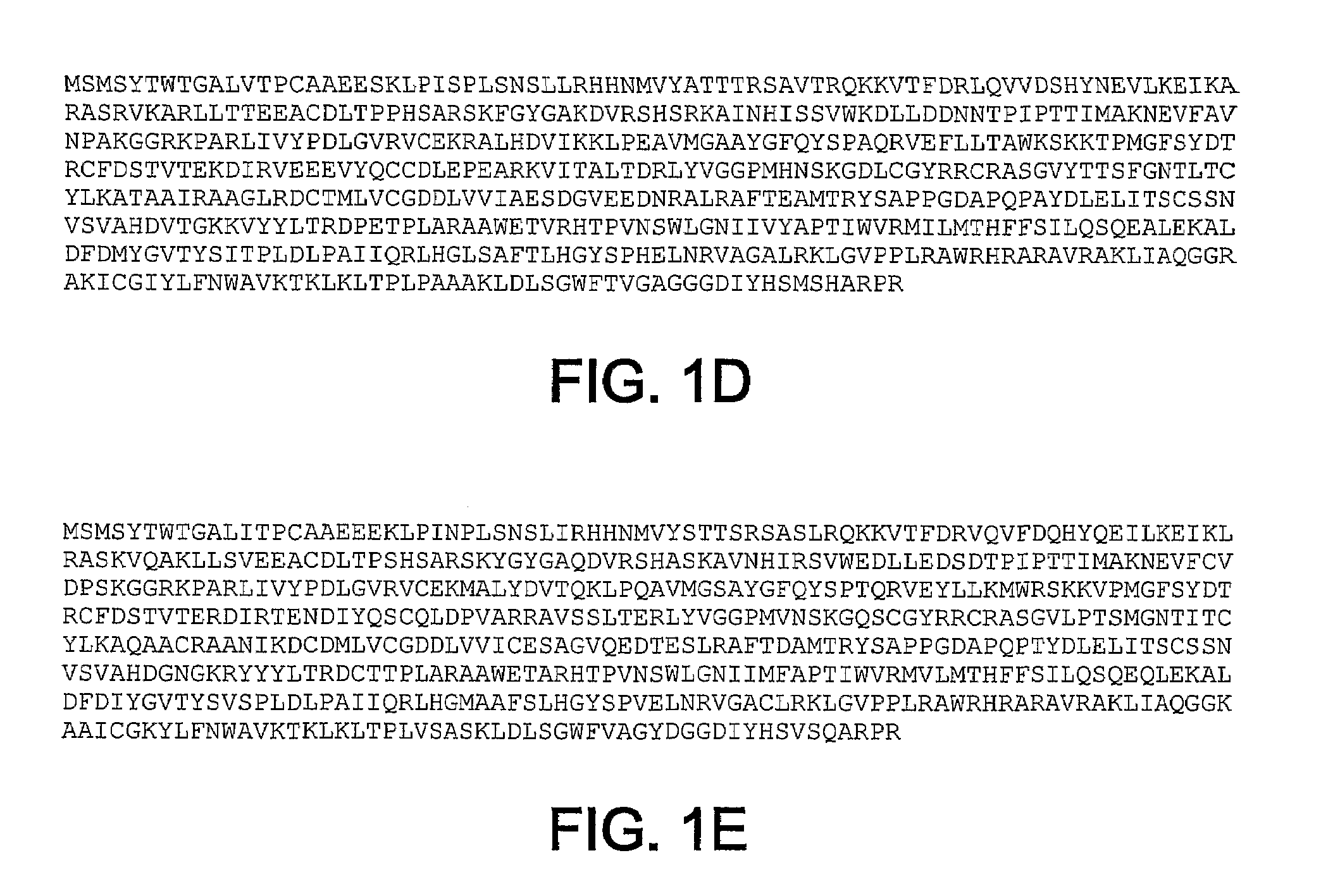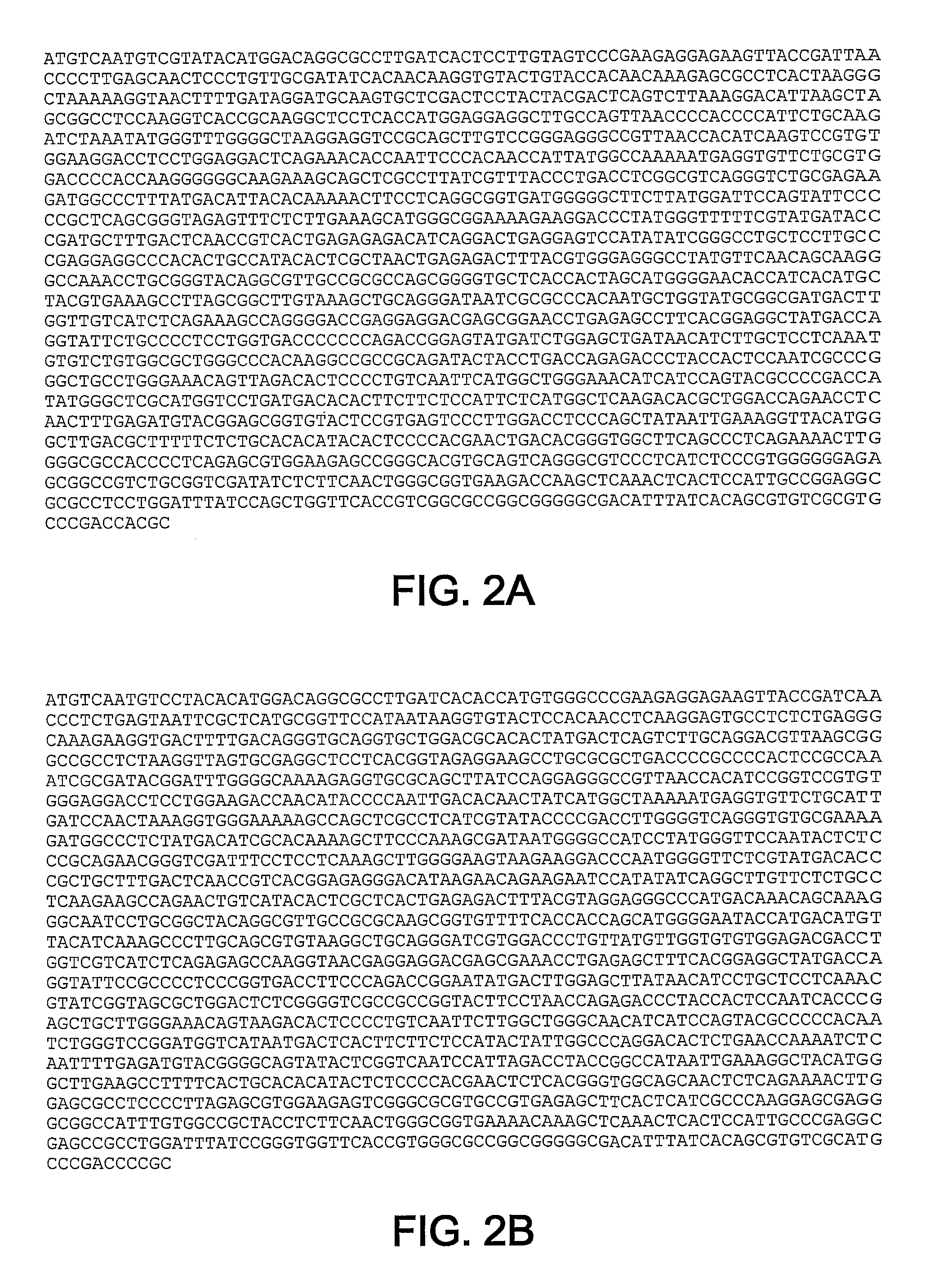HCV RNA-dependent RNA polymerase
a technology of rna-dependent rna and hcv, which is applied in the field of hcv rna-dependent rna polymerase, can solve problems such as liver failure and cirrhosis, and achieve the effects of improving the permeability of the rna and rna
- Summary
- Abstract
- Description
- Claims
- Application Information
AI Technical Summary
Benefits of technology
Problems solved by technology
Method used
Image
Examples
example 1
Rescue and Characterization of NS5B
[0065]NS5B genes were rescued and characterized from the sera of chronically infected chimpanzees. Total RNA was isolated from serum samples of chimpanzees chronically infected with HCV using the QIAGEN RNeasy Mini Kit RNA purification kit according to manufacturer's instructions (QIAGEN, Inc. Valencia, Calif.). Total RNA (5 to 10 microliters) was used as a template for the reverse transcriptase reaction (Superscript II RT, Invitrogen Life Technologies, Carlsbad, Calif.) with a 34 nucleotide dATP primer. RT reactions were heat inactivated at 65° C. for 15 minutes, and then digested with 1 μL each RNAseH and RNAseT1 (Roche Applied Science, Indianapolis, Ind.) at 37° C. for 20 minutes to remove RNA prior to PCR. Nested PCR was performed using Expand High Fidelity PCR System (Roche Applied Science, Indianapolis, Ind.) and the following primers:
[0066]
Genotype 2aPCR1, forward5′-CTCCGTCGTGTGCTGCGCCATGTC(SEQ ID NO: 11)reverse34 nucleotide dATP(SEQ ID NO: ...
example 2
Construction of NS5B Expression Clones
[0071]The BK NS5B Δ21 gene (Carroll et al., J. Biol. Chem. 278:11979-11984, 2003) was modified by standard molecular biology techniques to encode the sequence Leu-Glu-His-His-His-His-His-His (SEQ ID NO: 27) (CTCGAGCACCACCACCACCACCAC SEQ ID NO: 28) at the C-terminal end of the NS5B Δ21 coding sequence after codon 570, and then followed by a stop codon. The Leu-Glu pair is encoded by a unique XhoI site that is just in front of the histidine tag. The vector was further modified to encode a unique BclI sites at NS5B codon 10. This vector served as a template to subclone additional NS5B genes for protein expression as BclI-Xho fragments.
[0072]SEQ ID NOs: 1-5 all initiate with the first 10 codons of genotype 1b BK sequences. NS5B genes were cloned in frame as BclI-XhoI fragments using clone specific PCR primers. The NS5B constructs lacked the C-terminal 21 residues, which previously was demonstrated to increase solubility. All constructs were verified...
example 3
Bacterial Expression of NS5B Δ21 Enzymes
[0073]Glycerol stocks were used as seed cultures for large-scale purification. Glycerol stocks were prepared by transforming DNA into Rosetta™ (DE3) competent cells (Novagen). A 20 mL overnight culture of Luria-Bertani (LB) broth (containing 50 μg / mL ampicillin, 34 μg / mL chloramphenicol) was inoculated from a single colony. Cells were collected by centrifugation and used to inoculate a 1 L culture of LB broth with 100 μg / mL ampicillin only, and grown to mid-log phase (A600 of 0.4-0.5). To generate glycerol stocks, cells were again collected by centrifugation and resuspended, per liter of culture, in 50 mL ice cold LB broth. Then 500 μl aliquots of cells were individually mixed with 500 μl of 50% glycerol, placed into storage vials, quick frozen on dry ice and kept at −70° C. until use.
[0074]For large-scale growth, a glycerol stock was plated on LB plates containing 50 μg / mL ampicillin and 34 μg / mL chloramphenicol (Teknova), incubated overnight...
PUM
| Property | Measurement | Unit |
|---|---|---|
| temperature | aaaaa | aaaaa |
| pH | aaaaa | aaaaa |
| pH | aaaaa | aaaaa |
Abstract
Description
Claims
Application Information
 Login to View More
Login to View More - R&D
- Intellectual Property
- Life Sciences
- Materials
- Tech Scout
- Unparalleled Data Quality
- Higher Quality Content
- 60% Fewer Hallucinations
Browse by: Latest US Patents, China's latest patents, Technical Efficacy Thesaurus, Application Domain, Technology Topic, Popular Technical Reports.
© 2025 PatSnap. All rights reserved.Legal|Privacy policy|Modern Slavery Act Transparency Statement|Sitemap|About US| Contact US: help@patsnap.com



